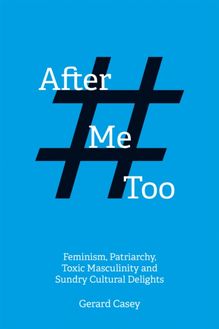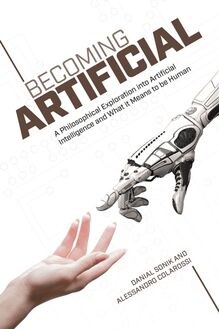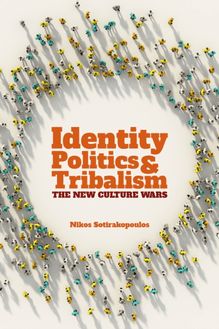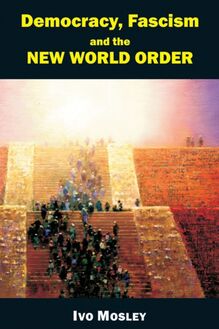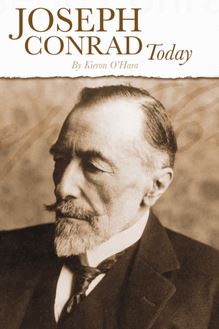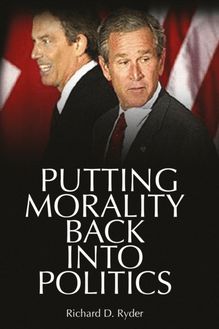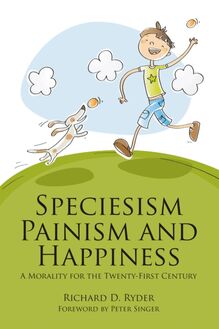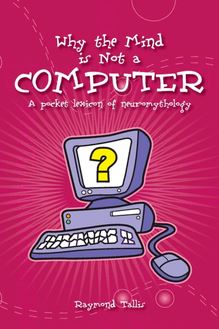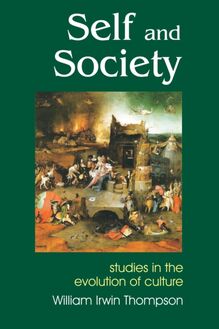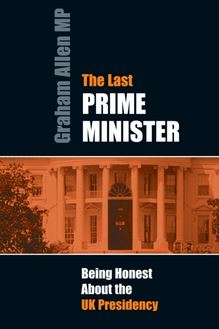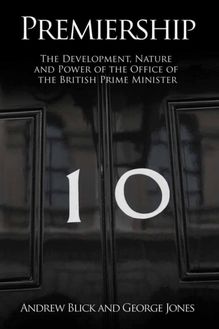-
 Univers
Univers
-
 Ebooks
Ebooks
-
 Livres audio
Livres audio
-
 Presse
Presse
-
 Podcasts
Podcasts
-
 BD
BD
-
 Documents
Documents
-
- Cours
- Révisions
- Ressources pédagogiques
- Sciences de l’éducation
- Manuels scolaires
- Langues
- Travaux de classe
- Annales de BEP
- Etudes supérieures
- Maternelle et primaire
- Fiches de lecture
- Orientation scolaire
- Méthodologie
- Corrigés de devoir
- Annales d’examens et concours
- Annales du bac
- Annales du brevet
- Rapports de stage
La lecture à portée de main
Vous pourrez modifier la taille du texte de cet ouvrage
Découvre YouScribe en t'inscrivant gratuitement
Je m'inscrisDécouvre YouScribe en t'inscrivant gratuitement
Je m'inscrisEn savoir plus
Vous pourrez modifier la taille du texte de cet ouvrage
En savoir plus

Description
Sujets
Informations
| Publié par | Andrews UK |
| Date de parution | 29 mai 2018 |
| Nombre de lectures | 0 |
| EAN13 | 9781845409814 |
| Langue | English |
Informations légales : prix de location à la page 0,0550€. Cette information est donnée uniquement à titre indicatif conformément à la législation en vigueur.
Extrait
FAKING THE NEWS
What Rhetoric Can Teach Us about Donald J. Trump
Edited by
Ryan Skinnell, PhD
Published in 2018 by
Imprint Academic Ltd
PO Box 200, Exeter EX5 5YX
www.imprint-academic.com
Digital edition converted and distributed by
Andrews UK Limited
www.andrewsuk.com
SOCIETAS: Essays in Political & Cultural Criticism
This collection copyright © 2018 Imprint Academic
Individual contributions © 2018 the respective authors
All rights reserved. No part of this publication may be reproduced, stored in a retrieval system, or transmitted, in any form or by any means without the prior written permission of the publisher, nor be otherwise circulated in any form of binding or cover other than that in which it is published and without a similar condition being imposed on the subsequent purchaser. Any person who does so may be liable to criminal prosecution and civil claims for damages.
The views and opinions expressed herein belong to the author and do not necessarily reflect those of Imprint Academic or Andrews UK Limited.
Introduction to Faking the News
Ryan Skinnell
For anyone reading this book, Donald J. Trump is undoubtedly a familiar character. Whether you think his election to the US presidency in 2016 was a triumph or a tragedy, the man has been drawing crowds for decades.
Rhetoric, at least as we’re using it in this book, is probably less familiar. For most people, rhetoric is the opposite of reality, summed up nicely by Teddy Roosevelt in 1917 when he wrote, “Rhetoric is a poor substitute for action, and we have trusted only to rhetoric. If we are really to be a great nation, we must not merely talk; we must act big.” [1] As Roosevelt helpfully illustrates, rhetoric is often viewed as a form of linguistic deception - pretty or flattering language that disguises people’s real intentions and misleads, or even tricks, audiences.
The definition of rhetoric as deception is useful, especially for understanding politicians. But it’s also limited. Rhetoric specialists, more commonly called rhetoricians, study rhetoric in broader terms as “the art of persuasion in its various forms.” As an area of study, rhetoric gives us a set of conceptual tools for studying persuasion. Rhetoric helps to make sense of the world by explaining how people use language (and other persuasive means) to get things done. Rhetoricians study deception, of course, but we also study how speakers and writers increase their authority, how they sway an audience, and how they convince people what to believe and/or how to act.
Rhetoric is not necessarily evil and deceptive, but it is always about how people use language, symbols, and gestures to accomplish (or to try to accomplish) their goals. Saying to your spouse “I need you to get milk at the store” is rhetorical because you are trying to get someone to do something. It may seem like a silly example, but actually convincing another person to buy you milk at the store is actually a pretty complex set of circumstances. It requires the presence of a relationship and of trust (you don’t generally ask a stranger to buy you milk and bring it to your home). It requires shared knowledge (do you usually get whole milk or skim? Gallon or half gallon?). And it requires careful communication (“I need it for dinner, so please get it on your way home from work”). We take these complicated circumstances for granted, but the more you notice them, the more obvious it is that all human affairs really rely heavily on the effectiveness or not of these sorts of mundane interactions.
When people use language, the purpose is to achieve a particular outcome - whether it’s getting milk, selling a product, appealing to voters, or taking a country to war. After all, achieving a goal is the whole point of persuasion, whether it’s persuasion we think is good or persuasion we think is bad. People are constantly using language, symbols, and gestures to get other people to believe or act in certain ways. This is what rhetoric attempts to describe. As a result, studying rhetoric helps us understand a used car dealer’s shady sales pitch as well as Nazi propaganda, but also the Gettysburg Address and the strategies scientists use to inform the public about new discoveries.
Rhetoric is actually one of Western Civilization’s oldest arts. Aristotle wrote a textbook about it almost 2500 years ago. Chaucer, Shakespeare, and Milton all studied it in school. And John Quincy Adams taught it at Harvard in the early 1800s. For as long as formal schooling has existed in Europe and the United States, rhetoric has been a part of the curriculum in some form or fashion, and it still is.
After an extended period of being trapped in the odd college English or Speech-Communications class, the study of rhetoric is making a resounding comeback in the United States. There are more than 70 PhD programs in rhetoric and an ever-growing number of undergraduate and Masters-level degree programs. Most people studying rhetoric in those programs are not (exclusively) studying deception, and the people teaching in rhetoric programs are certainly not teaching students how to be deceptive. Rather, the study of rhetoric is thriving in American colleges and universities because rhetoricians are helping students make sense of important persuasive phenomena in the world. The possibilities for studying persuasion are endless. They include social media and virality, globalization, marketing, technology, celebrity and pop culture, and, of course, national and international politics. Students encounter and practice thousands of different kinds of persuasion every day. Rhetoric gives them a particular set of skills for doing so thoughtfully.
Rhetoricians obviously think rhetoric’s revival in higher education is important for helping students navigate an increasingly complex educational world. Students can access millions of conflicting sources on 20 th -century Russian politics from their dorm rooms at 3:00am on any given day of the week. They can text or private message a struggling friend to set up a study date in the library. They can email a professor at a different university in another state with questions about a research project. And, they can teleconference with college students in Islamabad, Pakistan for a discussion on the benefits and drawbacks of cross-cultural art cooperatives. Understanding persuasion in each of these cases is really useful because it can help students make smart choices about how to accomplish their varying persuasive goals.
But, properly understood, rhetoric also has much to offer people who are not students or not just students. Rhetoric is closely linked to citizenship, democracy, and justice. That’s why it has existed for thousands of years. Literally, the first rhetoric handbooks were written to help citizens in Ancient Greece participate in the first democracy.
Persuasion plays a particularly important role in democracies because of how central it is to making the government work. Politicians have to persuade voters, policymakers have to persuade members of other parties, lawyers have to persuade jurors, and citizens have to contribute to all of those processes in various ways. In dictatorships, decisions do not require any input beyond the dictator’s. But in democracies, citizens have to participate knowledgeably in the government to make it work. Which means, they need to understand how persuasion works and how to be persuasive. Being an active member of a democracy requires citizens (as well as non-citizens, for that matter) to understand how other people are attempting to inform, motivate, and persuade them - for good or ill. How do you know which candidate to vote for? How should you evaluate evidence if you’re on a jury? What are the possible effects of a ballot measure or a proposition? Knowing these things helps people make better choices.
It’s obviously possible to learn about persuasion without learning about rhetoric, just as it’s possible to learn how to make delicious, seven-course meals without taking a cooking class. But a cooking class can help you understand and develop useful techniques for throwing a dinner party. Likewise, rhetoric can help by giving names to common persuasive tactics, by developing practical systems for assessing arguments and evidence, and by teaching people to see how persuasion works in general, as well as in more specific cases.
The goal of Faking the News: What Rhetoric Can Teach Us about Donald J. Trump , then, is to try to make sense of how the world works in the wake of Donald J. Trump’s election as the 45 th President of the United States of America.
It will become pretty clear pretty quickly that the contributors to this book find President Trump’s election troubling. There are many reasons why, but the ones we are qualified to make sense of are rhetorical: how did a man who routinely lied to reporters and to his supporters, who called his opponents names and insulted voters, who made crass comments about women and immigrants and many others, and who obviously and proudly had no grasp of US policy get himself elected? How did he establish authority? How did he sway audiences? And how did he convince people that he was qualified, capable, and responsible enough to deserve their votes?
Obviously, people have asked these questions at least since his infamous ride down the elevators at Trump Towers in June 2015 to announce his candidacy. And we’ve read some really compelling answers in the years since - written by academics, journalists, and cultural commentators alike. But these are still open questions.
In the following pages, eleven well-respected rhetoricians from around the US address the question of what rhetoric can teach us about Donald J. Trump. Each chapter (there are ten plus
-
 Univers
Univers
-
 Ebooks
Ebooks
-
 Livres audio
Livres audio
-
 Presse
Presse
-
 Podcasts
Podcasts
-
 BD
BD
-
 Documents
Documents
-
Jeunesse
-
Littérature
-
Ressources professionnelles
-
Santé et bien-être
-
Savoirs
-
Education
-
Loisirs et hobbies
-
Art, musique et cinéma
-
Actualité et débat de société
-
Jeunesse
-
Littérature
-
Ressources professionnelles
-
Santé et bien-être
-
Savoirs
-
Education
-
Loisirs et hobbies
-
Art, musique et cinéma
-
Actualité et débat de société
-
Actualités
-
Lifestyle
-
Presse jeunesse
-
Presse professionnelle
-
Pratique
-
Presse sportive
-
Presse internationale
-
Culture & Médias
-
Action et Aventures
-
Science-fiction et Fantasy
-
Société
-
Jeunesse
-
Littérature
-
Ressources professionnelles
-
Santé et bien-être
-
Savoirs
-
Education
-
Loisirs et hobbies
-
Art, musique et cinéma
-
Actualité et débat de société
- Cours
- Révisions
- Ressources pédagogiques
- Sciences de l’éducation
- Manuels scolaires
- Langues
- Travaux de classe
- Annales de BEP
- Etudes supérieures
- Maternelle et primaire
- Fiches de lecture
- Orientation scolaire
- Méthodologie
- Corrigés de devoir
- Annales d’examens et concours
- Annales du bac
- Annales du brevet
- Rapports de stage
